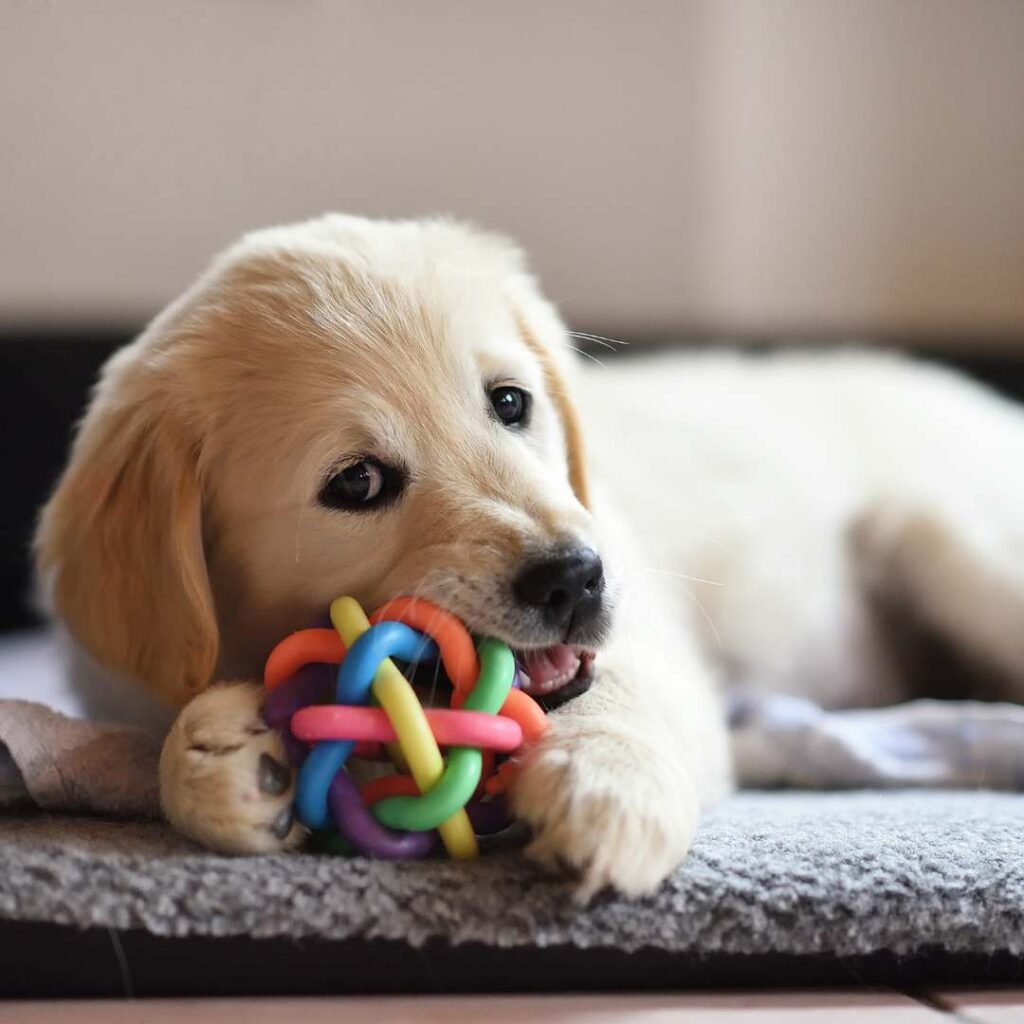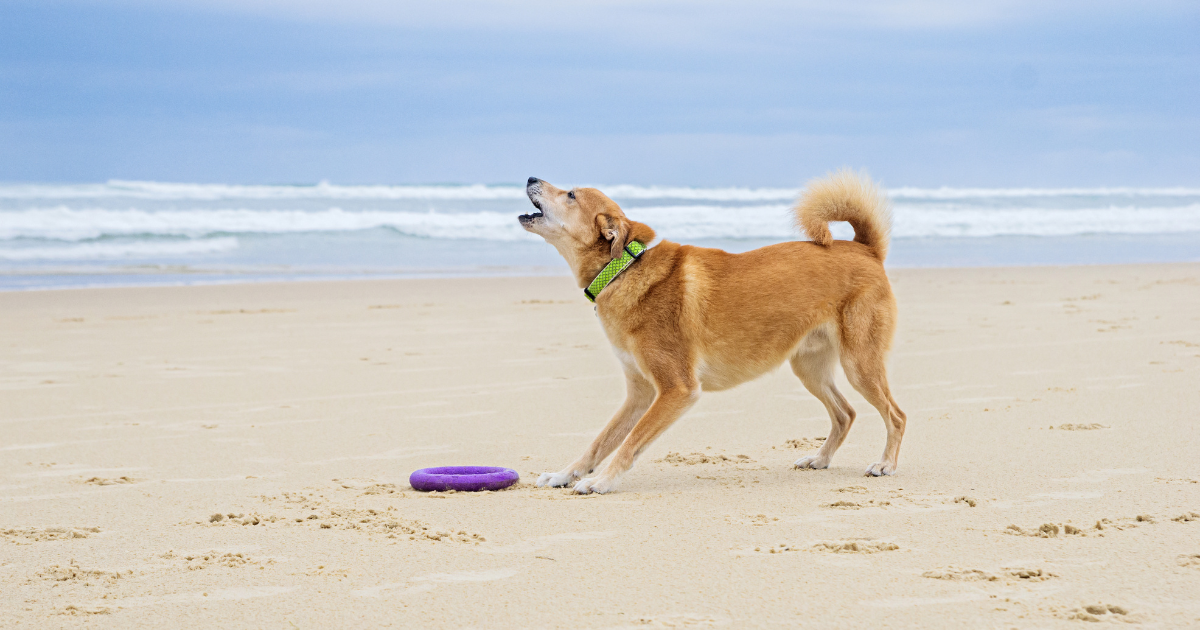When it comes to dogs and their behaviour, there are certain words that get thrown around that are either unhelpful, or just a simple (often lazy) term to describe ways of behaving that have a variety of causes, but all look a bit the same and may share some of the same triggers! One of those I hear often as a dog trainer and behaviourist is ‘reactivity’.
We all think we know what a reactive dog looks like… They’re the ones who lunge at the end of the lead, shouting at other dogs or people, and looking pretty scary while causing their owner to have to hang on for dear life to keep control.
Just saying a dog is ‘reactive’, however, isn’t helpful. It doesn’t describe the behaviour accurately and more importantly, it doesn’t describe the emotion behind the behaviour.
Behaviour is a nothing more than a symptom of how a dog is feeling. And so-called ‘reactive dogs’, can be feeling a wide range of emotions.
You can’t change any dog’s behaviour without changing the emotion that drives that behaviour. So let’s look at some of the possible feelings that lead a dog to behaving ‘reactively’.
What is reactivity?
When we talk about reactivity in dogs, what we are talking about is an overarousal to common stimuli. In the majority of cases, this is focussed on other dogs.
They become so preoccupied with whatever that trigger is that they become hard to control, almost impossible to distract, and difficult to remove from the situation.
Fear
While we might think the feeling behind this is aggression – because it can look a bit scary – most times, a reactive dog is actually a fearful dog.
This fearfulness could be genetic, be due to a lack of appropriate socialisation, or a previous bad experience. Or it could even be a behaviour learned from other family dogs.
Without careful management – and often professional guidance – a fearful dog can be pushed into become aggressive.
Looking for some support? Find out how to find a qualified dog behaviourist.
Frustration
Sometimes apparent reactivity can have its origins in the very opposite of aggression. Over-friendliness!
A dog can get so excited at the sight of other dogs and the desire to go and play with them, that they’ll lunge and bark. But because the lead prevents them from any canine interaction, that can easily turn to frustration and even aggression. Most commonly, this is the result of a lack of socialisation or poor socialisation.
Good socialisation teaches dogs how to listen to their human, and be calm around other dogs. And also that other dogs are not necessarily for playing with. Dogs who haven’t been socialised – or else have been in puppy classes where the hour has been spent charging around with other dogs – haven’t learnt how to chill out around other canines.
Lack of outlets for natural/hardwired behaviour
Without appropriate exercise, an outlet for their hardwired behaviours and suitable enrichment opportunities, a dog can get bored, frustrated and hyper-active (or depressed). This can easily lead to ‘reactive behaviour’.
This can then become a vicious circle, as usually the owner gives them less exercise and fewer activities (as they’re such a nightmare to take out) and in turn the dog has more energy and is even more bored and frustrated.

Inappropriate training methods/equipment
Using equipment or methodology that causes pain or fear, increases arousal and stress, and so very often increases reactivity.
Read more about stress in dogs.
Is it really reactivity?
Sometimes over-excitement, exuberance and misplaced canine enthusiasm can appear a lot like reactivity. There can be similar lunging, barking, leaping around! But often it’s accompanied by a loosely wagging tail and friendly body language, and the dog can be fairly easily distracted.
If you have a reactive dog, whatever you think the reasons might be, the very best thing to do is talk to a canine behaviourist. They can assess your dog and help you develop and implement a behaviour modification plan involving desensitisation and counter conditioning.
In the meantime, take a proactive management approach. Make sure your dog is getting an outlet for their hardwired behaviour needs, they’re getting enough appropriate exercise – this could involve training classes, dog sports or breed specific activities – and enough social company.
Avoid putting your dog in situations where you know they’re likely to behave in a ‘reactive’ way, as behaviours that are practised, get better! This could mean changing your walking times and routes if that’ll make you less likely to encounter any triggers. And use a muzzle if you think your dog could cause anyone injury.


Since starting Benji on tails dog food which he loves he is growling showing his teeth and being quite aggressive when he has his toys etc . I am quite worried .
Hi Margaret, this isn’t something we’d expect to see from a change in diet – we’d recommend speaking to a behaviourist, this way they can see first hand your dog’s behaviour and give you tips and advice on how to combat this behaviour change. Good luck!
My sprocker spaniel constantly barks when I stop and talk to people when we are out on our walks. He also barks at my son when he comes into the living room and when he hears him getting up ! It’s very frustrating ! Any advice as to why he behaves like that and what can we do to control it ?